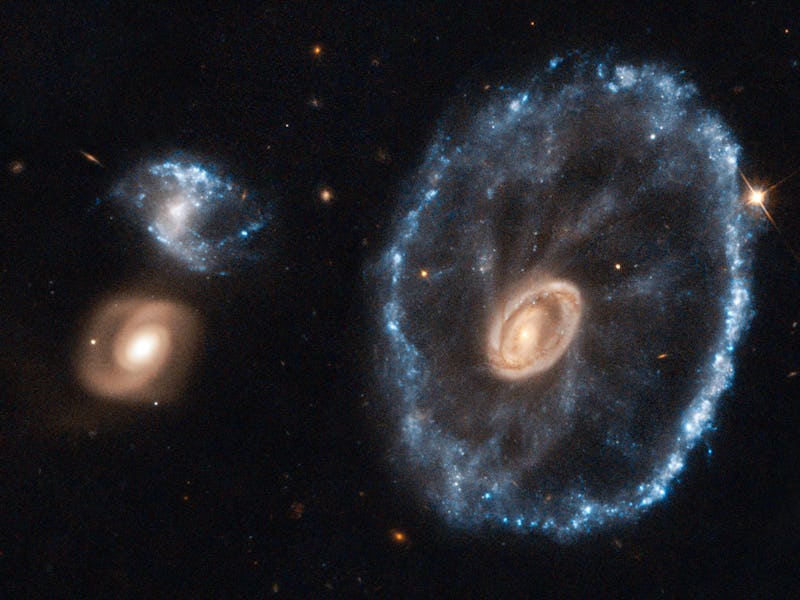The "Cartwheel Galaxy" Is Surrounded by a Hula Hoop of Stars
It's all the result of a galactic collision.

The dazzling, cosmic bicycle wheel you see below is the result of a collision of galactic proportions.
This image of the aptly named Cartwheel Galaxy was taken with the Hubble Space Telescope on December 27, 2010, and later enhanced by astronomers. It was featured on Thursday as NASA’s Astronomy Picture of the Day.
This circular galaxy is part of a cluster of galaxies about 500 million light-years away from Earth in the constellation Sculptor. Its colossal ring spans 150,000 light-years in diameter and is composed of extremely bright newborn stars.
The Cartwheel Galaxy seen next to two smaller galaxies in the Sculptor constellation.
The Cartwheel Galaxy didn’t always look like this, though; it was probably a spiral at one point, similar to our own Milky Way. But then it got into a bit of a tussle with another neighboring galaxy. The effects of this intergalactic collision gave the Cartwheel Galaxy its stunning new look.
When two galaxies collide, the stars that reside inside of them rarely crash into each other, simply because of the vast distances between them. But the gravitational forces produced by all of these celestial bodies passing by each other can seriously shake things up.
It’s likely that this ring of stars was the result of a smaller galaxy passing through a larger one. This caused a sort of ripple effect that pushed dust, gas, and even stars away from this gravitational collision point.
This majestic deep space occurrence is one of the most dramatic examples of ring galaxies. So don’t be surprised if you catch this picture in an astronomy textbook soon.